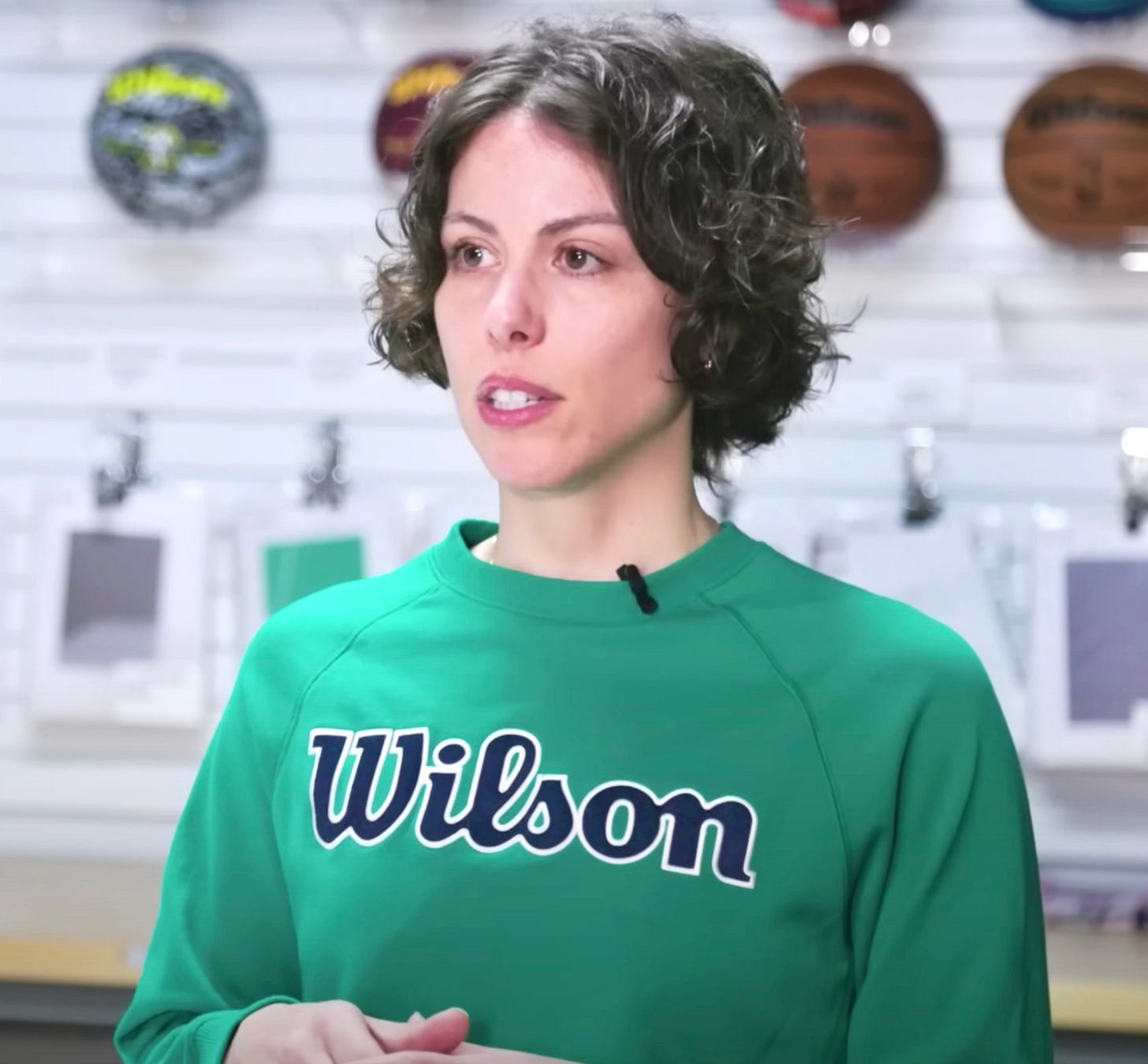Is This the Basketball of the Future?
Wilson’s new 3D-printed “airless” ball is an intriguing glimpse into the potential future of ball design across many different sports.
Did you watch the NBA Slam Dunk Contest last Saturday night? Me neither. But it featured an interesting development, because one of the competitors — Rockets forward Kenyon Martin Jr. — used a new “airless” prototype ball created by Wilson, the same company that makes the official NBA basketball.
As you can sort of see in the photo shown above, the new prototype ball is basically a hollow latticework shell, which means it doesn't have to be inflated. But Wilson says the ball “nearly [matches] the performance specifications of a regulation basketball, including its weight, size and rebound (bounce).” The ball is still in the developmental stages, but the fact that they used it in the slam dunk showcase suggests that it may soon be ready for a retail launch.
Here are some video clips of Martin dunking the new ball, which provide at least a little sense of how it bounces:
So how is this ball manufactured? It’s 3D-printed! Here’s a really interesting video that explains the process — definitely worth your three minutes:
Some of you may be thinking that this sounds like marketing hype — in fact, it’s the kind of thing that I myself might normally dismiss as marketing hype — but for some reason I’m really intrigued by this new ball (plus I can definitely see how a ball that doesn’t have to be inflated could be easier to deal with for youth programs, schools, and so on). After watching the video and reading Wilson’s press materials, I had lots of additional questions and also found myself wanting to try out the ball for myself, just so I could see how it feels, how it bounces, and so on. So I contacted Wilson and asked if they could send me a loaner ball, and also requested an interview with someone who worked on the project.
Unsurprisingly, they turned down my request for the loaner because only a handful of the balls exist, so they’re not going to send one to a reporter. But they did arrange for me to speak with innovation manager Nadine Lippa, the engineer who’s been heading the project (and who’s featured in the video embedded above). Here’s the transcript of the very interesting call we had a few days ago, edited for length and clarity:
Uni Watch: Let's start with a little sense of a timeline. How long has this ball been in development?
Nadine Lippa: We’ve been working on this ball for at least five years. I started at Wilson in January 2018, and I think it was like my second week or something that I started having meetings about it.
UW: What was the impetus for creating this product? I mean, the inflatable basketball has been around for over a century and people seem pretty happy with it, so what was the problem or deficiency that this new ball was intended to address?
NL: I would say there are a few. But the main one is the idea that people normally need to have additional equipment on hand to inflate the ball — a pump, a needle. I know it’s not much equipment, but it’s a barrier for people. You go in your garage and if your ball is at all deflated, you’re less likely to use it.
And then there’s also the idea that this ball maintains the same performance. So it’s not shifting, it’s not slowly deflating over time either — it’s always the same experience.
UW: Who would you imagine the typical customer for this product to be? Like, a recreational user? Schools? Leagues?





